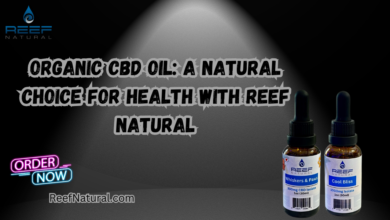Understanding Peripheral Vascular Disease and Lymphoedema: Key Insights for Prevention and Treatment
Peripheral Vascular Disease (PVD) and Lymphoedema are two vascular-related conditions that significantly impact the circulatory and lymphatic systems. Both diseases, while distinct in their pathophysiology, can have a serious effect on an individual’s health and quality of life. At the Vascular & Interventional Centre, we provide expert treatment and holistic care for patients suffering from these conditions, using cutting-edge endovascular and surgical treatments. In this article, we will delve into the causes, symptoms, treatments, and preventive measures for these conditions, with a focus on how comprehensive care can help patients achieve better outcomes.
What is Peripheral Vascular Disease (PVD)?
Peripheral Vascular Disease (PVD) refers to the narrowing or blockage of blood vessels outside the heart and brain, commonly affecting the arteries that supply blood to the legs and feet. The primary cause of PVD is atherosclerosis, which occurs when fatty deposits (plaques) build up in the arteries, restricting blood flow. This reduction in blood circulation can lead to severe complications, including pain, ulcers, and even tissue death if left untreated.
Symptoms of PVD
The symptoms of PVD can vary depending on the severity and location of the arterial blockage. Some common signs to look out for include:
- Leg pain or cramping, especially when walking or exercising (claudication)
- Coldness or numbness in the legs or feet
- Skin color changes, such as a pale or bluish tint
- Non-healing sores or wounds on the feet or legs
- Weak or absent pulse in the legs or feet
If you experience any of these symptoms, it’s crucial to consult with a vascular surgeon at the earliest opportunity to prevent further complications.
What is Lymphoedema?
Lymphoedema is a condition that occurs when the lymphatic system is unable to properly drain lymph fluid, leading to swelling, usually in the arms or legs. The lymphatic system plays a vital role in maintaining the balance of fluid within the body by filtering waste and toxins through lymph nodes. When the system is compromised, fluid accumulates in the tissues, resulting in swelling and discomfort.
Lymphoedema can be either primary (congenital) or secondary (acquired). Secondary lymphoedema is more common and is often a result of cancer treatments (such as radiation or surgery), infections, or injury that affects the lymph nodes or vessels.
Symptoms of Lymphoedema
The primary symptom of lymphoedema is swelling, but other common signs include:
- Heaviness or tightness in the affected limb
- Decreased range of motion
- Recurrent infections in the affected area
- Thickening or hardening of the skin
While lymphoedema is a chronic condition, it can be managed with proper care and treatment.
The Link Between Peripheral Vascular Disease and Lymphoedema
Although PVD and lymphoedema are separate conditions, they can share common underlying risk factors, such as obesity, diabetes, and smoking. Additionally, both conditions involve the circulatory system and can result in poor blood and lymph flow. It’s not uncommon for individuals with PVD to develop lymphoedema as the reduced blood flow exacerbates fluid retention in the affected limbs.
Conversely, untreated lymphoedema can place additional strain on the blood vessels, increasing the risk of developing peripheral vascular issues. It is essential for patients with one of these conditions to monitor for signs of the other and seek comprehensive vascular care.
Treatment Options for Peripheral Vascular Disease and Lymphoedema
Both PVD and lymphoedema require timely diagnosis and a customized treatment plan. At the Vascular & Interventional Centre, our expert vascular surgeons use both medical and surgical treatments to address these conditions.
Treatment for Peripheral Vascular Disease
The goal of treating PVD is to improve blood flow, relieve symptoms, and prevent complications. Treatment options include:
- Lifestyle Changes: Quitting smoking, eating a healthy diet, and engaging in regular physical activity are fundamental in managing PVD.
- Medications: Blood thinners and cholesterol-lowering medications can help prevent plaque build-up in the arteries.
- Endovascular Procedures: In cases where the arteries are blocked, minimally invasive techniques such as angioplasty or stent placement can open up the affected vessels.
- Surgery: In severe cases, bypass surgery may be required to reroute blood around the blocked arteries.
Treatment for Lymphoedema
Managing lymphoedema focuses on reducing swelling and preventing further fluid buildup. Treatment may include:
- Compression Garments: These specially designed garments help maintain pressure on the affected area and improve lymph drainage.
- Manual Lymphatic Drainage (MLD): A specialized massage technique aimed at stimulating the lymphatic system and encouraging fluid movement.
- Exercise: Gentle exercises can improve the flow of lymph and blood in the affected limb.
- Surgical Options: In certain cases, surgery may be needed to remove excess tissue or to repair damaged lymph nodes.
Prevention and Early Detection
Preventing the progression of peripheral vascular disease and lymphoedema involves regular check-ups, a healthy lifestyle, and early detection. By identifying the early signs and seeking prompt treatment, patients can prevent the conditions from worsening and improve their overall quality of life.
- For PVD: Regular screenings, especially for individuals with diabetes or a family history of vascular diseases, can help detect early blockages. Keeping blood pressure, cholesterol levels, and blood sugar levels under control is also crucial.
- For Lymphoedema: Individuals who are at risk, such as those who have had cancer treatment or surgery involving the lymph nodes, should be vigilant for early symptoms and seek advice from a healthcare provider at the first signs of swelling.
Conclusion: Moving Forward with Comprehensive Care
Peripheral Vascular Disease and lymphoedema are both complex conditions that require expert care and management. With the right treatment plan, patients can experience significant improvements in their health and quality of life. At the Vascular & Interventional Centre, we are committed to providing holistic care, using advanced diagnostic tools and treatment options to help our patients regain mobility, reduce swelling, and prevent further complications. If you or someone you know is dealing with these conditions, it’s essential to seek professional care as early as possible to ensure the best possible outcomes.
By staying informed and proactive about vascular health, we can create a future where individuals living with PVD and lymphoedema can thrive and lead fulfilling lives.



